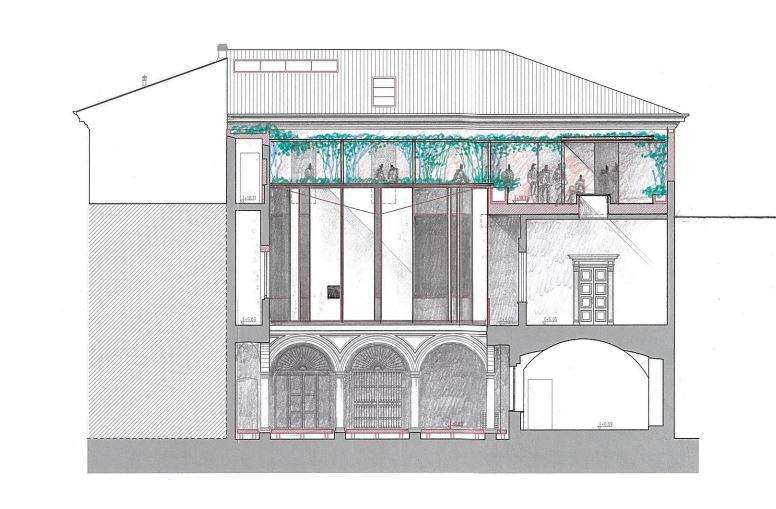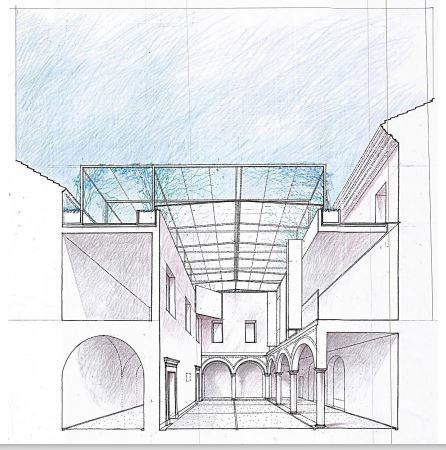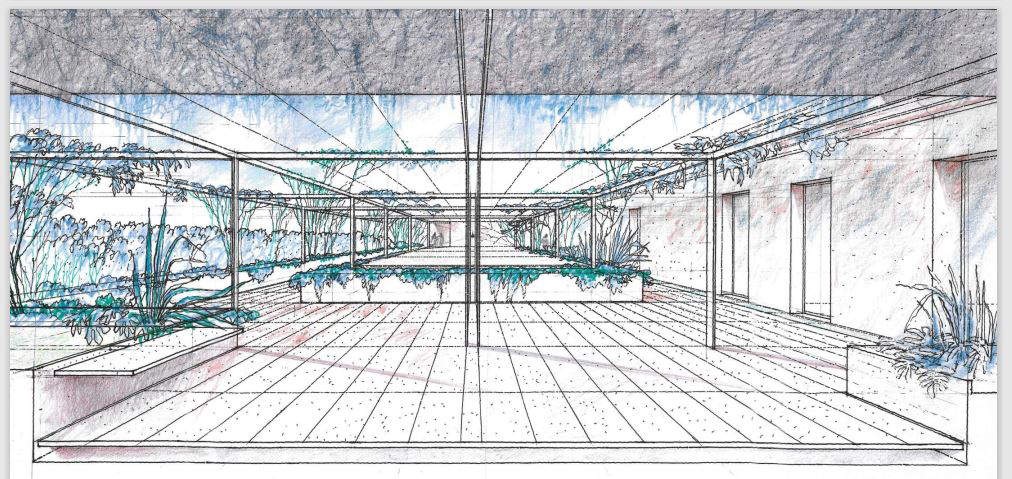Carrara, unveiled the new Museum of the City of Marble. Here's what it will look like
Not a new marble museum in place of the one in Viale XX Settembre, but a museum that will dialogue with it and with the archaeological site of Fossacava to tell the world of marble and, with it, the history of the city of Carrara to the fullest extent. This is how the city administration presented what will be the new Museum of the City of Marble, which will be built in the 17th-century Palazzo Pisani in the heart of the historic center. In order to recover the ancient building from years of neglect and degradation, the Municipality of Carrara can count on about 4 million euros that come partly from the Bando delle periferie, partly from Pnrr funds, and finally supplemented with internal resources. To take care of the birth of this new exhibition space, the Carrara municipality has already been able to count on the support of the Marble Foundation and Guido Canali’s architectural firm.
For now, the time horizon for the opening still remains distant, “at least two or three years,” explains Councillor for Public Works Andrea Raggi, since plans for the structural and plant engineering part will still have to be prepared, but in the meantime, the restoration conceived by Canali has already received the go-ahead from the Superintendence. The museum will tell the story and identity of Carrara through the people and trades, in an “emotional” journey, as it has been called, that starts with the Romans and the ancient city of Luni, passes through the 16th-century development linked to the Cybo Malaspina family, and is marked by the presence of great artists such as Giambologna, Michelangelo, Antonio Canova, Pietro Tenerani, Luigi Bienaimè, and Carlo Finelli. A two-millennia-long history that continues through the work of artists, craftsmen, architects, and designers who come to Carrara every day from all countries of the world. The materials on display at the new museum will be identified through a selection process involving the collaboration of citizens and especially schoolchildren and city cultural associations, with the support of the directors of the Academies, Luciano Massari and Claudio Rocca, Fondazione Marmo and the participation of Professor Canali himself.

 First renderings of what
First renderings of what First renderings
First renderings“Palazzo Pisani,” says Carrarese Culture Councilor Federica Forti, “will be the museum of the City of Marble, a museum of the stone culture around which the identity of our territory has developed. This venue will enhance the other cultural sites, particularly the Civic Museum of Marble in Viale XX Settembre and the Fossacava Roman Quarry, and it will have a strong attractive capacity, enticing the tens of thousands of tourists who visit the quarries to come to our historic center: think what it would mean to bring these people to our museums, restaurants and stores.”
“This is a very flexible conservation project involving a building strategically located in the historic center,” explains Guido Canali. “The ground floor, with its twentieth-century storefronts, has a precise vocation as an outpost of cultural communication with the city and will welcome visitors with a small space for temporary exhibitions, a refreshment area and a book shop. The actual museum will be on the first and second floors and will be one-way through an experience that will not compete with the one in Viale XX Settembre but will have its own specialization as a museum of the city and the territory. In Carrara, talking about city and territory means talking about marble and quarries, but at Palazzo Pisani it will be done in a different language. Here, in the material on display, documentary interest will have to prevail, not necessarily through real works of art, but also thanks to those humble objects of daily use that in the past were made of marble still lacking plastic, such as pestles for herbs, kitchen sinks, street plaques, and which, appropriately organized in the new museum at Palazzo Pisani, will be able to shed light on a certain period or aspect of city life.”
“With the reopening of Palazzo Pisani,” adds Carrara Mayor Francesco De Pasquale, “we are not only recovering a prestigious palace in the heart of the historic center but we are going to enrich the cultural offerings of our city: the new Museum of the City of Marble will be an element of attraction for tourists and visitors who, after a visit to the quarries, will be able to come here, through our beautiful ancient alleys, to continue their discovery of Carrara. But the museum will also be a living and ever-changing space, a resource for the people of Carrara, who will be able to explore and learn more about the history and traditions of the place where they were born and raised.”
“The project is objectively beautiful and forward-looking,” adds Matteo Venturi, vice-president of the Marble Foundation and president of Confindustria Massa-Carrara, “and can be seen as a driving force for the revitalization of the historic center through a city museum, which does not replace, but should complement and expand what already exists on Viale XX Settembre. The hope is that legs will be given to the work and the vision so that something unfinished is not left in the area: these are the projects that we like and that should inspire all those who want to invest and believe in an uncompromising revitalization of the city.”
“The curatorship proposed for this Museum will not simply be in the choice of materials on display, but will also and above all be linked to the anthropological and symbolic value of the objects on display, so much so as to show the peculiarity of the city of Carrara as an artistic laboratory that involves new generations in the recovery of a tradition of artistic craftsmanship and the connection with the world of art, many times a relationship disregarded if not completely forgotten,” explains the director of the Florence Academy, Claudio Rocca. “The challenge is equally important in thinking of a museum as a living place that reactivates a supply chain that instead needs to be recovered and enhanced in its highest aspects, both of craftsmanship and artistic production, such as marble sculpture.”
The new museum will then have to dialogue with the gipsoteca of the Academy of Fine Arts that is to be built in the nearby Palazzo Rosso, former home of the civic library. “The realization of the new gipsoteca associated with the opening of the new museum with this important intervention on Palazzo Pisani will deliver to Carrara two important exhibition venues, with a strengthening of the city circuit that enhances the know-how of our artisan workshops,” stresses the director of Palazzo del Principe, Luciano Massari. “The models that allowed the creation of the masterpieces of the 1800s and also our heritage of contemporary art.”
 |
| Carrara, unveiled the new Museum of the City of Marble. Here's what it will look like |
Warning: the translation into English of the original Italian article was created using automatic tools. We undertake to review all articles, but we do not guarantee the total absence of inaccuracies in the translation due to the program. You can find the original by clicking on the ITA button. If you find any mistake,please contact us.




























